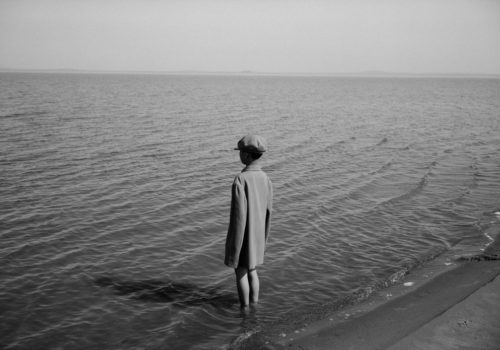Streets are made for transportation, and they are also public spaces for the flow of pedestrians. Naturally then, they are perfect platforms for the dissemination of information. In China, there are billboards and shop windows designated for this purpose. But for these there are complex approval procedures, and also high costs. Choosing to bypass such formal advertising channels, many people print the information they wish to publish on paper and paste these small advertisements onto any exposed surface, or sometimes even scrawl the information directly onto the walls of public spaces. The services advertised vary from apartment rentals, locksmith services to sexual services, the sale of drugs, and even firearms.
One task of city administration employees is to remove such illicit content from urban spaces. Sometimes, they carefully scrape the advertisements off the wall, or thoroughly rub them out with a damp cloth. But oftentimes, they use the simplest and most efficient method available to them: directly covering them with paint. But the fresh paint does not always match the wall’s color, and the cleaners actually end up leaving more obvious traces behind than the advertisers. For city administrators, this is unimportant: as long as the advertising information is cleared away their goal is achieved—aesthetics is not considered.
To create the images of the No Name series, Wang Ningde searches walls and other surfaces in public urban spaces, photographically collecting images of these traces left by city administration employees. The brushstrokes come in various shapes and sizes scattered throughout the city. On close inspection they seem random as they are not formed to show anything but to erase.
The illicit advertisers and the city cleaners are tied in a conflicting relationship. These traces of paint are a record of contradiction and resistance between authority and minor offenders in the urban environment. Wang Ningde views each brushstroke as an essential expression of conflict. He uses them as building blocks to form composite images that refer to nameless mark-makers, nameless scenes, nameless participants of group actions.
When it comes to the use of urban space and to antagonistic modes of action, the markings also share similar attributes with street graffiti—both are evidence of the voices of peripheral groups, at the same time they force their way in our visual field, joining the infinite number of images to be found in the cityscape. Collecting and integrating elements of the social landscape, Wang Ningde explores the basic structure of social conflict, seeking a subjective expression of social history from the reality of micro narratives.
Wang Ningde uses photography as a medium without allowing the photographs to be restrained in time. Here, images are materialized as brushstrokes, disguised as part of the language of painting. There is a sort of humor at work, referencing the complex and oft-entangled art historical relationship of photography and painting.
The series Some Days is the product of many years’ effort; Wang Ningde spent much patience to complete it. This group of works gives one a feeling of the conscious thought and understanding activity that the artist put into the creation of it, rather than the usual intuition with which an artist approaches his work.
The work Some Days describes the completeness of a period of adolescence already lost, a husband and wife who clearly see the happy illusion of their love shattered, excellent camouflage and cold reality; it is about the states of youth, sexuality, growing up, and the dangers therein. The figures’ empty expressions and refusal to make eye contact disturb the viewer’s confidence—Wang Ningde holds the viewer’s gaze, not only by gazing inwardly or viewing the viewer, but also by his special perspective of the works. In his works, the signifier and signified cannot coherently compose an integrated chain of meaning, cannot discourse from one particular point of view, and they cannot be distinguished from each other. He seems to resurrect dead images, juxtapose them and finally rearrange them into new combinations.
One can notice that there is a “warm” side to Wang Ningde’s works as well. This warmth clearly filters through the many layers of national tragedy caused by a collective unconsciousness familiar to us. With his touching psychological narrative he shares the story and symbols with the understanding insider. In a kind of reconstructed narrative grammar, he uses metaphors and imagination to once again clean up these strands and memories and open them to face the whole of humanity.
Lianzhou Foto 2016
November 19 to December 9 2016
Lianzhou, Guangdong
China
















